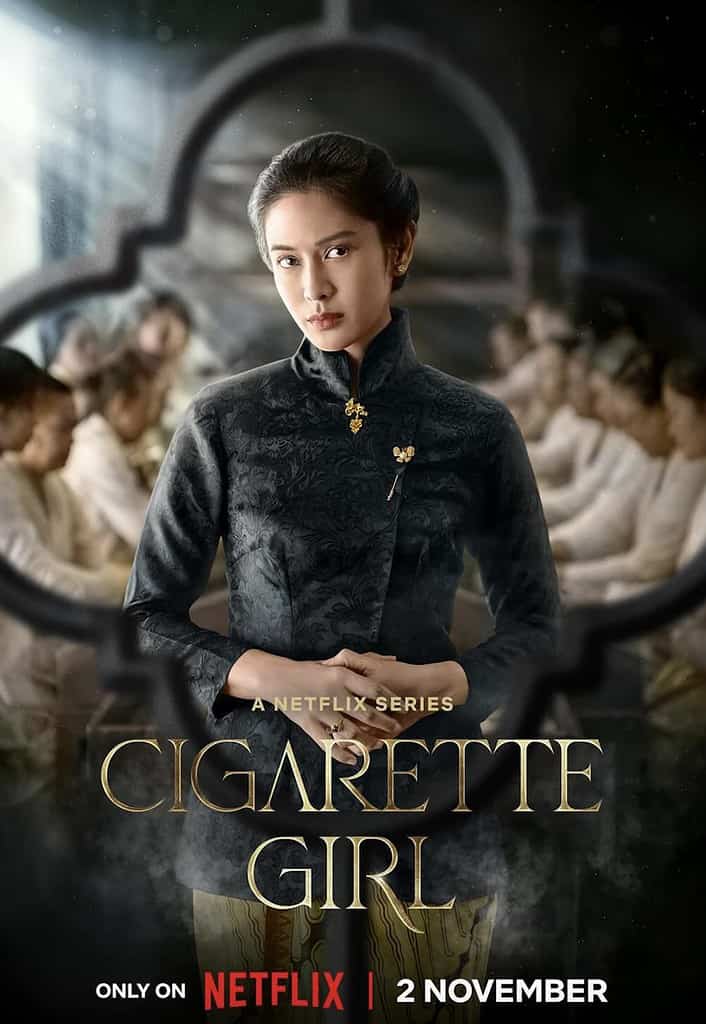Cigarette Girl (Gadis Kretek) comes from Indonesia. Two generations of interrelated people are set in the world of spiced and flavored cigarette making. Some of them were small entrepreneurs, some were wealthy. Part of the story happens in the 1960s and part is in the 2000s. The series features romance, danger, secrets, women’s struggles and political history.
Cigarette Girl (Gadis Kretek) checks my boxes because it stars a woman and has a woman director. The story comes from a novel by a woman. It’s the first Indonesian series I’ve seen. It’s a whole new world to experience. Netflix has been investing money in Indonesia (it’s a big audience) and is bringing some of that work to American screens.

Dasiyah (Dian Sastrowardoyo) was born into the world of spice cigarettes. As an independent minded adult, she wanted to create the recipes for the flavors for her family’s cigarettes. Women weren’t allowed to do that in the 1960s. One of her recipes eventually brought great wealth, but she was never acknowledged for her talent.
An impoverished man, Raja (Ario Bayu), came to work for Dasiyah’s father. There was great chemistry between Dasiyah and Raja from the start. He was the only man she’d ever met who saw and understood her talent and her ambition. He didn’t condemn her for it – he encouraged her.
Dasiyah’s parents wanted her to marry Seno (Ibnu Jamil), a member of a rival cigarette making family. This would consolidate their businesses and help both families. Dasiyah wanted to be with Raja. Before either of those things could happen Dasiyah and her father were arrested and imprisoned as part of the attacks on the communist party. They weren’t members of the party; their names were listed by a betrayer.

Ongoing with this story from the 1960s was a simultaneous story in the 2000s featuring Lebas (Arya Saloka) and Arum (Putri Marino). Lebas’s father was Raja. Raja, now an old man, was dying of cancer. His dying wish was to find his first love Dasiyah.
Much of what had happened in the past was hidden and kept secret. Lebas visited a cigarette museum looking for clues to locate Dasiyah.
Lebas met Arum at the museum. Her family had donated much of what was being catalogued there. She was a doctor. Lebas managed to get Arum interested in helping him. Together they found old letters and diaries that might lead to Dasiyah.
Jumping back and forth between the two time periods and the two couples, the story of what had happened all those years ago slowly came out. Old secrets were revealed and unknown connections were discovered. It was hard on everyone to face the old emotions and the old truths.
The series was co-directed by husband-and-wife team Kamila Andini and Ifa Isfansyah. In an interview Kamila Andini said, “It’s very hard for Indonesians to look at something very face on.” You see that so clearly in the series as people struggle to face what they are learning and to give up long held secrets.
The romance in the 1960s was slow and sweet. There were lots of meaningful glances and long silences. The budding romance among the second generation was more of a kismet kind of thing. Everything about this Indonesian production was good work. The acting, the costumes, the cinematography, the tension in the storytelling. All good. The time jumps between the years and generations were cleverly and skillfully handled.
Netflix picked this one carefully. As more content out of Indonesia appears on our screens I’ll be interested in watching. If you’ve watched this one, let me know what you thought of it.
